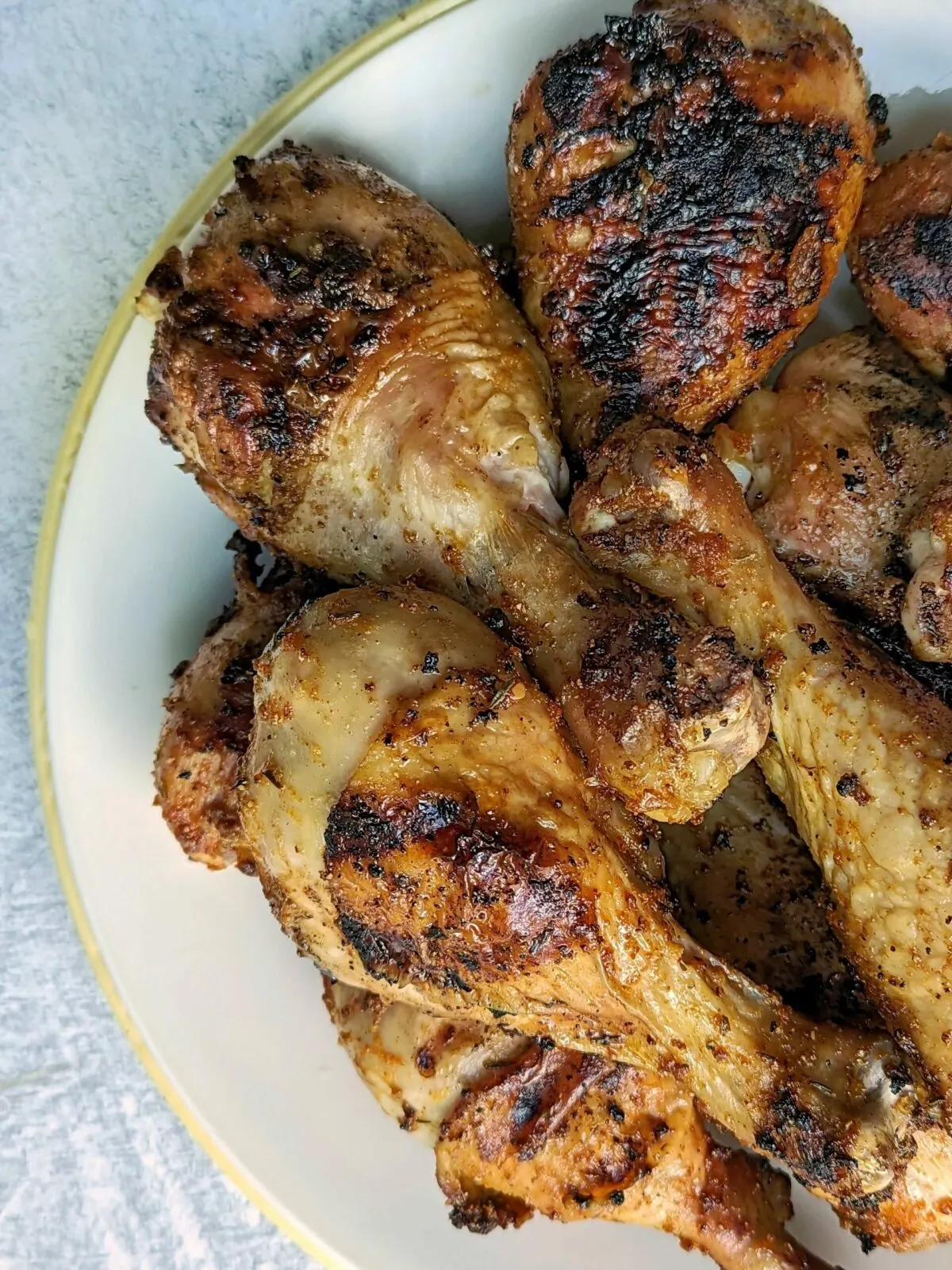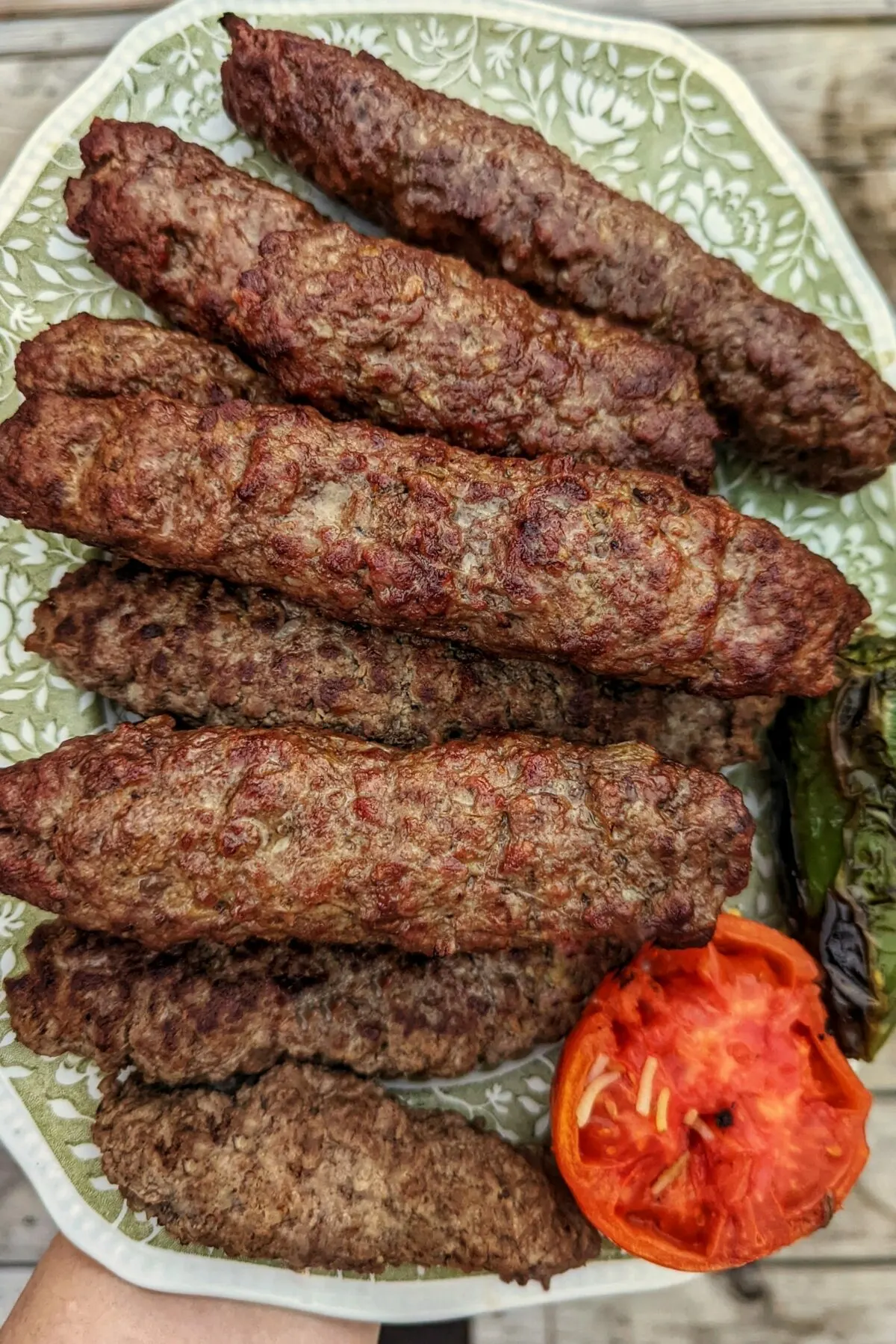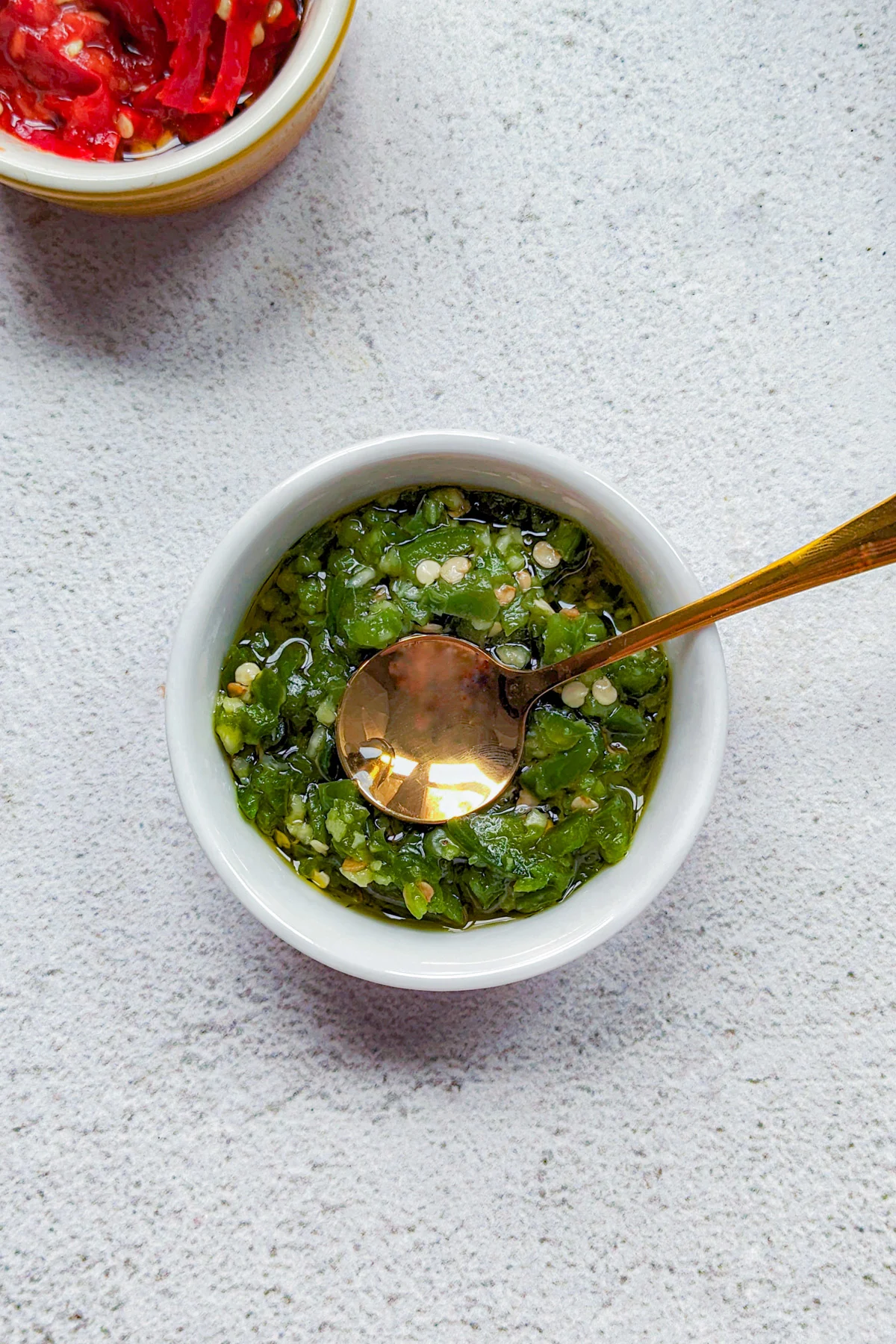Calling all chili lovers, this spicy fermented shatta sauce is just what you need to flavor and add the perfect amount of heat to all your meals.
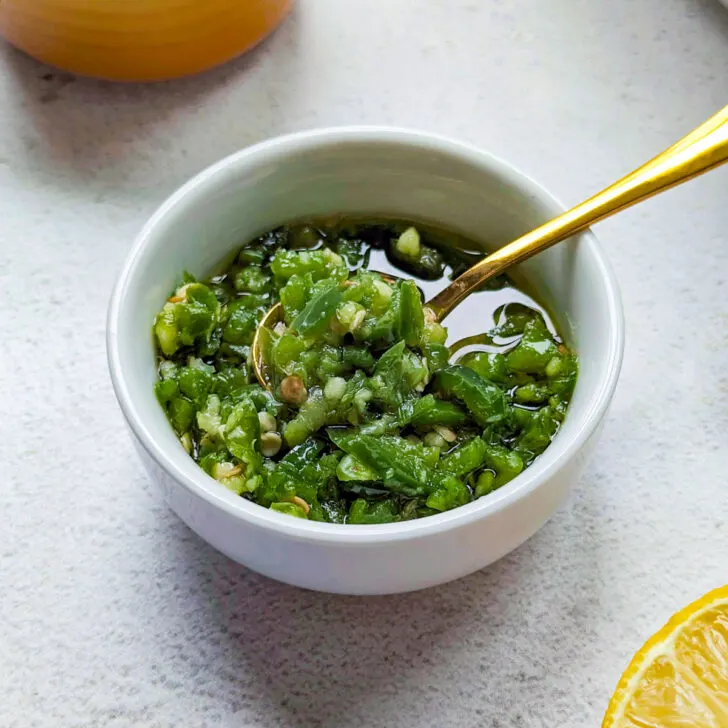
Why This Sauce Works
- Prepare the homemade shatta recipe using fresh, simple ingredients.
- The fiery condiment is versatile, so feel free to use my recipe as a starting point and adjust it to your liking.
- The hot sauce is easy to make – perfect for meal prep. I always keep a jar in the refrigerator.
- It’s a good sauce for grilled meat or veggies, and you can use it to finish wraps, sandwiches, and egg dishes like shakshuka.
What is Shatta Sauce?
Shatta is a Middle Eastern condiment that likely originates from Egypt, used as hot sauce or salsa. The sauce is traditionally made by crushing fresh red or green chiles before letting them sit in the sun for a few days with salt to ferment (similar to making achar in India). After fermentation, the chilies are mixed with fresh herbs and olive oil for serving. The texture ranges from liquid to a thicker chili paste, similar to skhug or pesto.
If you love herbed sauces and dips, don’t miss out on my cilantro chimichurri, guacamole, and avocado green goddess dressing.
What Peppers Should I Use?
Experiment with your favorite red or green chili peppers, depending on whether you want to make a red shatta or green shatta sauce recipe.
Green Chili Peppers:
- Jalapeño Peppers
- Serrano Peppers
- Green Bell Peppers
Red Chili Peppers:
- Cayenne Peppers
- Fresno Chiles
- Habanero Peppers
- Red Bell Peppers
- Bird’s Eye Chiles
Ingredients You’ll Need
- Peppers: Any chili peppers work, mild or spicy, so use what you like and what is available. Remove the seeds from the chiles before chopping them if you want them to be less spicy.
- Salt: Use a small amount of kosher salt to cure the peppers. Salt removes the moisture from the peppers, preserving them for longer. It’s best to use non-iodized salt, such as sea salt or kosher salt, since iodine in table salt can hinder fermentation and affect the overall taste.
- Garlic: I use two fresh garlic cloves, but measure with your heart.
- Vinegar: You can use apple cider vinegar or fresh lemon juice for a zesty kick, but I like the sharpness of white vinegar.
- Olive Oil: I recommend using high-quality extra virgin olive oil since it is a main ingredient. The oil is needed to keep the sauce from oxidizing.
Additions and Substitutions
- This recipe is a great way to experiment with different peppers until you find a combination you love. However, I recommend choosing red or green chiles since combining more than one variety will turn the sauce brown.
- Fresh herbs like cilantro and parsley are a great addition to the sauce.
- Flavor the sauce with warm spices such as Aleppo pepper, ground cumin, cayenne pepper, ginger powder, and ground coriander.
Tools Used to Make this Recipe
You will need a sharp knife, sterilized glass jar, mesh strainer, and a food processor or mortar and pestle (if you want to do it by hand) to make this recipe.
How to Make Shatta Sauce
The full recipe with measurements is in the recipe card below.
Prepare the Peppers:
Step 1: Add chopped chiles and salt to a sterilized jar and seal with a lid. Shake the jar to coat and refrigerate for 3-5 days.
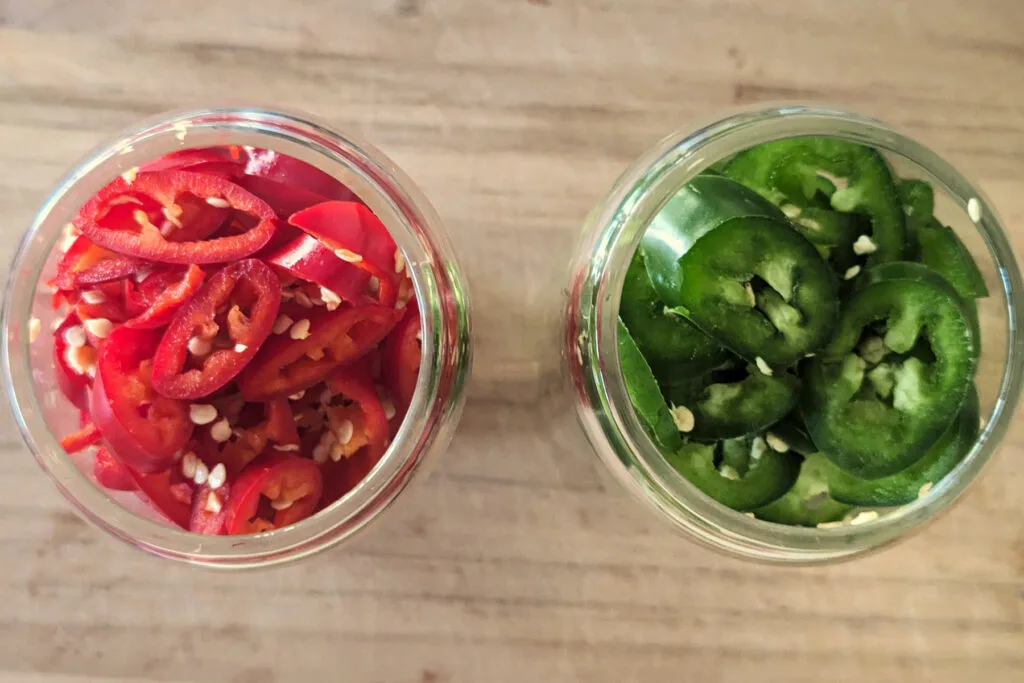
Combine the Sauce:
Step 2: Drain the chiles through a fine mesh sieve and transfer them to a food processor. Add garlic and vinegar, and process until smooth or chunky, depending on your preference.
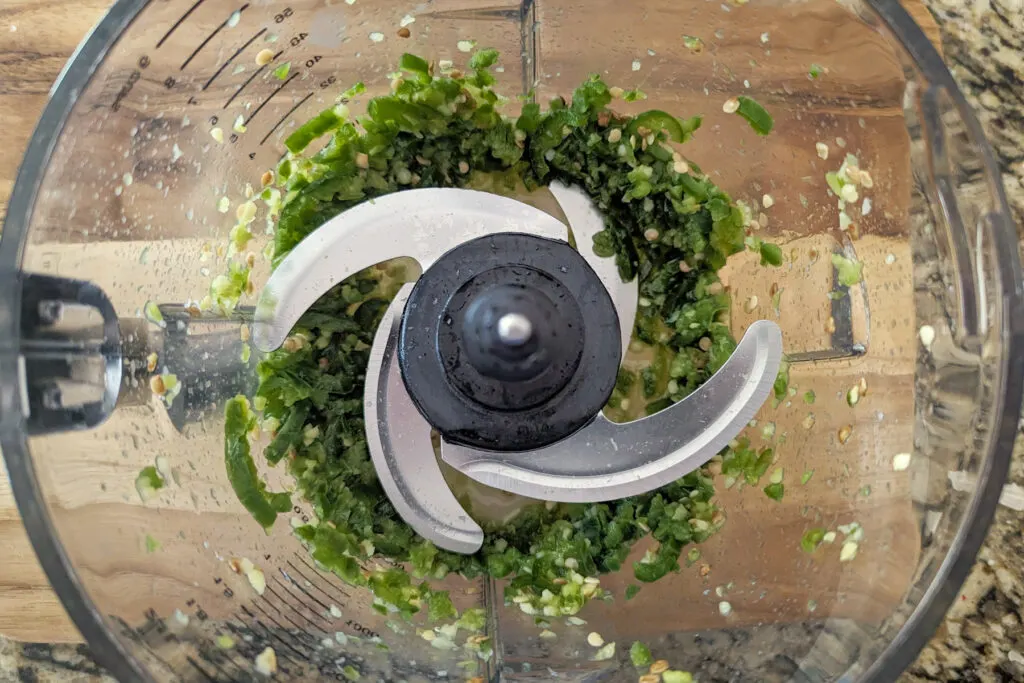
Step 3: Return the sauce to the glass jar and add enough oil to cover the sauce.

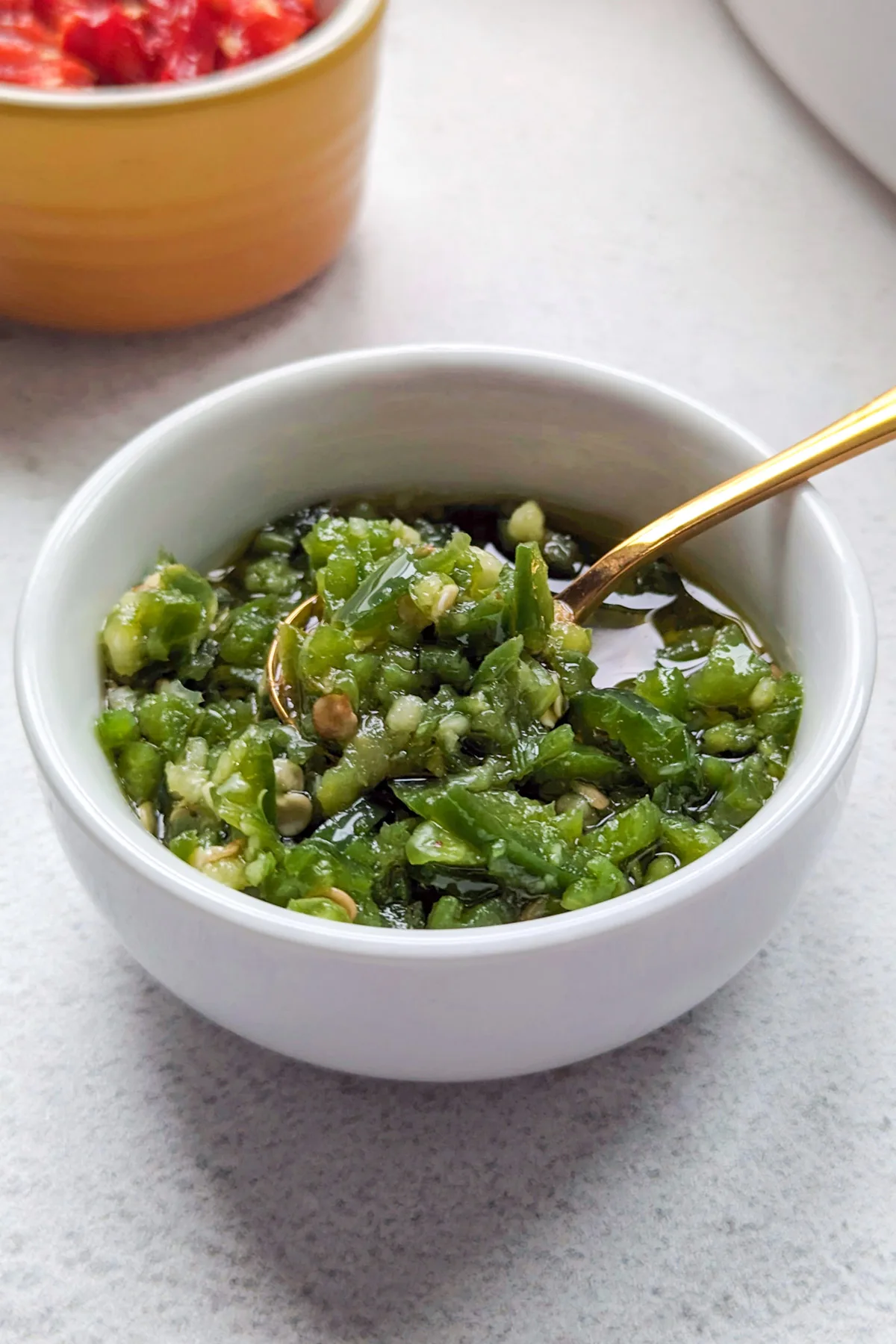
Expert Tips
- Since the recipe involves fermentation and pickling, begin with clean materials. Wash the peppers, and clean the glass jar and knife with soap and warm water.
- Depending on where you keep the shatta, the fermentation process may go faster or slower. Leave a jar in the refrigerator for 3-5 days (since fermentation is slower at cooler temperatures) or on the countertop for three days. If you decide to ferment the sauce at room temperature, cover the jar with a lid, but do not seal it.
Serving Suggestions
Use the spicy condiment to add Middle Eastern flavor to grilled meat, fish, and vegetables.I t’s good with labneh, hummus, and pitas, too!
- Spread it onto a falafel gyro and other wraps.
- Use it as a dipping sauce for air fryer paneer, falafels, or quinoa balls.
- Drizzle the sauce onto scrambled or fried eggs and air fryer home fries.
- Combine a few tablespoons of shatta sauce with mayonnaise for a quick and spicy aioli that tastes delicious on burgers and sandwiches.
What to do With the Leftovers
- Refrigerate – Store the leftovers in a glass jar or airtight container in the fridge for six months. Bring the spicy sauce to room temperature for 10 minutes before serving it since olive oil hardens once it cools.
- Freeze – I often make extra sauce to freeze ahead. Pour the leftovers into a freezer-safe container or bag. Shatta sauce freezes for six months. Alternatively, you can divide the leftover sauce into ice cube trays, freeze it, and transfer the cubes to a freezer-safe bag until ready to use them.
- Thaw – Defrost the paste in the refrigerator overnight.
- Repurpose – Make compound butter or aioli with the leftovers. Or you can combine shatta with Greek yogurt or sour cream for an easy-to-make veggie dip and pair it with rainbow wraps for a tasty snack or appetizer.
Frequently Asked Questions
What does shatta taste like?
Shatta sauce is bold, bright, and spicy! It is garlicky, tangy, and has plenty of flavor thanks to fermentation. If you are sensitive to spicy food, I recommend deseeding the chiles before using them to make the recipe.
How is shatta fermented?
Clean and prepare the peppers and transfer them to a clean glass jar. Use 1-2 tablespoons of salt for every pound of chiles. The salt helps prevent the growth of bad bacteria while increasing the number of healthy good bacteria.
This process is called lacto-fermentation, where the beneficial bacteria convert sugar and starch in the peppers into lactic acid, which preserves the food and gives it a tangy flavor. This is the same process I use to make pressgurka and Japanese hakusai.
Do I have to ferment the chiles?
Without fermenting the chiles first, the sauce won’t last as long. However, you can skip the fermenting process and store the sauce in an airtight container in the fridge for 3-5 days. Don’t forget to bring the sauce to room temperature before serving since olive oil hardens once it cools.
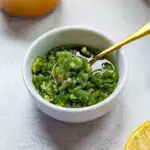
Shatta Sauce
- Glass Jar
- 1 pound red or green peppers, stemmed and roughly chopped
- 1 tablespoon kosher salt
- 3 garlic cloves, smashed
- 1 tablespoon white vinegar
- ½ cup extra virgin olive oil
- Add chopped chiles and salt to a sterilized jar and seal with a lid. Shake the jar to coat and refrigerate for 3-5 days.
- Drain the chiles through a fine mesh sieve and transfer them to a food processor. Add garlic and vinegar, and process until smooth or chunky, depending on your preference.
- Return the sauce to the glass jar and add enough oil to cover the sauce.
- Since the recipe involves fermentation and pickling, begin with clean materials. Wash the peppers, and clean the glass jar and knife with soap and warm water.
- Depending on where you keep the shatta, the fermentation process may go faster or slower. Leave a jar in the refrigerator for 3-5 days (since fermentation is slower at cooler temperatures) or on the countertop for three days in warmer temperatures. If you decide to ferment the sauce at room temperature, cover the jar with a lid, but do not seal it.
- The nutritional information shown is an estimate provided by an online nutrition calculator. It should not be considered a substitute for professional advice.



